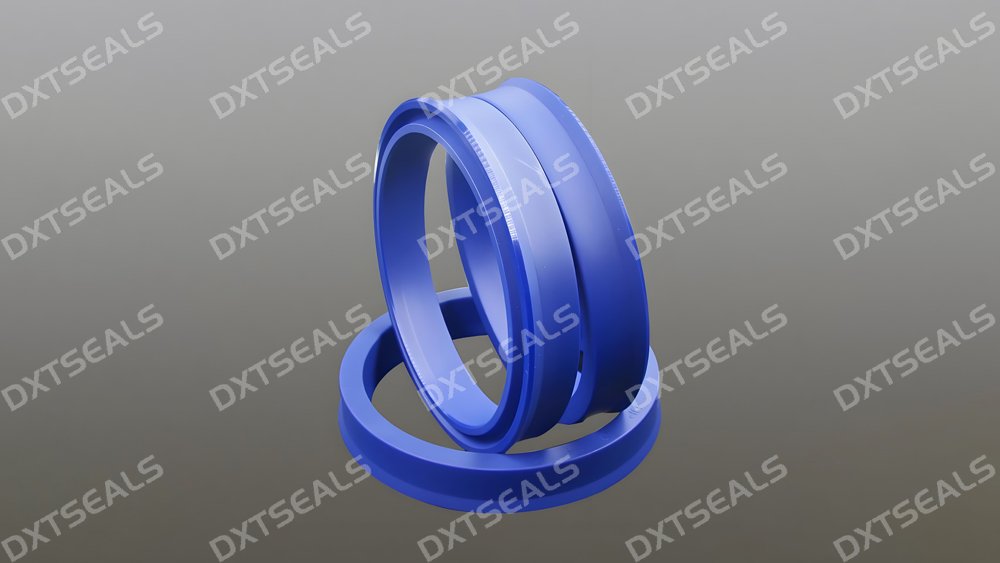
Sealing components are critical to the safe and efficient operation of industrial systems. Whether it's preventing fluid leakage, protecting internal components, or ensuring system integrity under pressure, seals must withstand a wide range of working conditions.
One of the most important decisions when selecting a seal is choosing the right material. The wrong material can lead to premature failure, costly downtime, and even equipment damage. In this guide, DXTSEALS outlines the key factors and material recommendations based on common industrial environments.
🔍 Key Factors in Seal Material Selection
Before choosing a material, consider the following criteria:
-
Operating Temperature
Will the seal be exposed to high heat or extreme cold? -
Pressure Load
Does the application involve low, medium, or high-pressure conditions? -
Chemical Exposure
What fluids or gases will the seal contact? -
Friction and Wear
Will the seal be in dynamic (moving) or static (stationary) use? -
Mechanical Stress
How much compression, expansion, or vibration will the material endure?
🧪 Common Seal Materials and Their Properties
Here are the most widely used materials for seals, along with their typical applications:
🔸 NBR (Nitrile Butadiene Rubber)
-
Temperature: -40°C to +100°C
-
Strengths: Good resistance to oil, fuel, and abrasion
-
Limitations: Poor resistance to ozone and weathering
-
Applications: Hydraulic seals, oil seals, automotive gaskets
🔸 FKM (Fluorocarbon Rubber, e.g., Viton®)
-
Temperature: -20°C to +250°C
-
Strengths: Excellent chemical and heat resistance
-
Limitations: Expensive, not ideal for low temperatures
-
Applications: Engine seals, aerospace components, chemical plant seals
🔸 EPDM (Ethylene Propylene Diene Monomer)
-
Temperature: -50°C to +150°C
-
Strengths: Great resistance to weather, ozone, steam, and water
-
Limitations: Not suitable for oil-based fluids
-
Applications: Water system seals, brake systems, outdoor applications
🔸 PTFE (Polytetrafluoroethylene)
-
Temperature: -200°C to +260°C
-
Strengths: Chemical inertness, high temperature, low friction
-
Limitations: Brittle under stress, poor elasticity
-
Applications: High-temperature chemical seals, valve seats, gaskets
🔸 PU (Polyurethane)
-
Temperature: -30°C to +90°C
-
Strengths: Excellent abrasion and tear resistance
-
Limitations: Limited chemical resistance
-
Applications: Hydraulic cylinder seals, wear rings, high-pressure seals
✅ Material Recommendations by Operating Condition
| Condition | Recommended Material |
|---|---|
| High Temperature (>200°C) | FKM, PTFE |
| Low Temperature (< -30°C) | EPDM, Silicone |
| Oil & Fuel Exposure | NBR, FKM |
| Water or Steam Environment | EPDM |
| High Pressure Systems | PU, PTFE (with backup rings) |
| Strong Chemical Contact | PTFE, FKM |
| Outdoor UV/Ozone Exposure | EPDM, FKM |
| Dynamic Sealing (Rotary/Reciprocating) | PU, NBR, FKM |
🛠 Best Practices for Material Selection
-
Always match material to the worst-case condition, not just average use.
-
Use lab or field-tested data for your specific media (chemical compatibility charts help).
-
Consider hybrid materials or composite seals for applications involving multiple stresses.
-
Factor in lifecycle cost, not just the price of the raw material.
🏁 Conclusion
The right seal material ensures system reliability, reduces maintenance costs, and enhances performance. By understanding your working environment and matching it with the appropriate material, you can greatly extend the life of your equipment.
At DXTSEALS, we specialize in custom sealing solutions and material consultation. Whether you're working in automotive, oil & gas, food processing, or heavy machinery, we can help you choose the ideal seal material for your needs.
📩 Contact us to learn more or request a tailored material recommendation!
